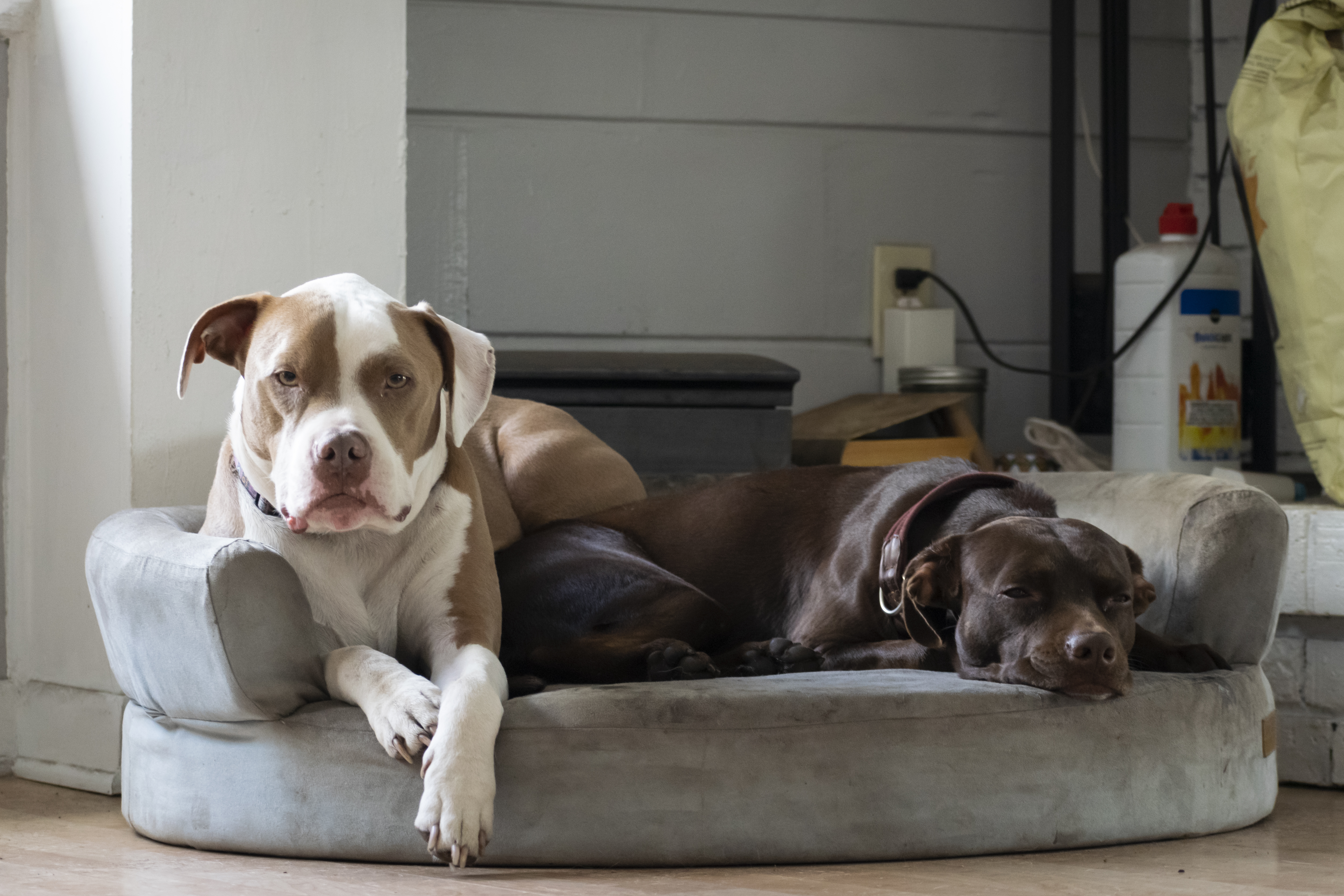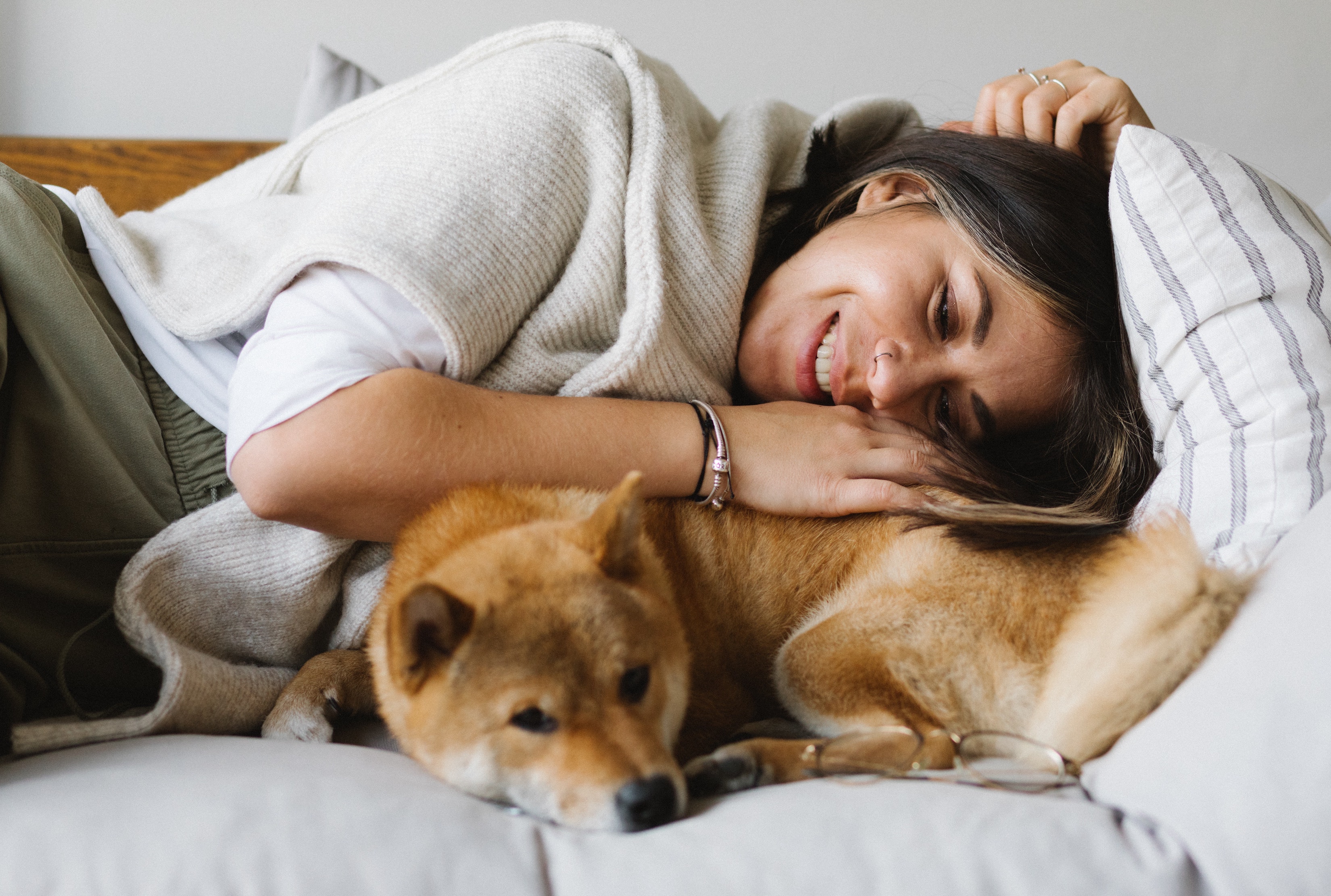Understand Your Dog’s Cues to Enhance Pet Wellness

At EquiVet Care, we know that pet wellness is more than keeping your dog healthy and safe. Learning to communicate with your pet creates a lasting bond that will grow and deepen as the years go by. Find out how to interpret your best friend’s facial expressions, body language and vocalizations to enrich your relationship and your dog's well-being, too.
Your Dog’s Facial Expressions Speak Volumes
Smiles, frowns, surprise and dejection—all these emotions come across in human facial expressions. It may surprise you to know that cute, fuzzy canine faces can express many emotions, too.
However, your dog’s expression may not mean the same thing as your own, according to the American Kennel Club.[1] For example, you have probably seen dogs smile with their lips stretched tightly to bare their teeth and the corners curved upward.
This isn't always a friendly smile, though. Along with a low growl, it indicates your dog has gone into a high state of alert and defensiveness. Of course, dog smiles can express happiness as well, especially when paired up with wiggles of joy.
Your dog's eyes are very expressive, too. An intense stare at an approaching person or animal indicates wariness. Your dog is ready to defend you at the first sign of aggression.
In contrast, when he looks away rather than meeting your gaze, that can be a positive gesture. For your pup, breaking a stare is a tension-diffusion technique. It indicates that you can both relax because there are no imminent threats.
One phenomenon of making eye contact with your dog is its bonding effect. According to a 2015 study, eye contact between you and your dog heightens oxytocin production in both your brains, similar to the chemical bonding process between parent and newborn.[2]
Canine Body Language Will Clue You In
When a dog wags its tail, it's often a telltale signal of happiness. In some cases, however, a wagging tail means something different.
Dogs wag their tails when their emotions are in high gear. For example, a terrier will wag her tail energetically when she detects a rodent nearby. A golden retriever puppy wags its tail when meeting an older dog, indicating friendliness and a bit of anxiety.[3]
On the other hand, when your dog’s tail is lowered between his legs, he is showing submission. Perhaps you scolded him, and he is acknowledging that you’re the boss. When his tail is neither wagging nor dragging, your dog is most relaxed.
Vocal Cues in Canine Communication
Your dog strives to understand what you say, so you should learn to understand the sounds dogs make and their meanings, too, such as:[4]
- Whining – Like a child, your dog may whine when he wants something.
- Whimpering – Whimpering can be a signal that your dog is in pain or distress.
- Groaning – Your dog may groan contentedly when settling in for the night, or she may be groaning in pain.
- Sneezing – Dogs sneeze while playing to express excitement or to get someone’s attention.[5]
- Barking – Strident or rapid barking may signal potential danger.
- Yapping – Single high-pitched yips express excitement.
- Growling – Dogs growl when threatened or when something threatens you. They may also growl at you when they are hurt, warning you to stay away.[6]
EquiVet Care: A Virtual Pet Care Ecosystem for Total Pet Wellness
From virtual examinations to virtual veterinary care, EquiVet provides wellness services and veterinary referrals for your pets. If you need to schedule an office visit at a local vet, we will send your dog’s medical records ahead to streamline the treatment process. Get in touch with us today to learn more about how the EquiVet approach empowers pet owners and veterinarians alike.
References:
- https://www.akc.org/expert-advice/advice/how-to-read-dog-body-language/
- https://www.cbsnews.com/news/dogs-and-people-bond-through-eye-contact/
- https://www.akc.org/expert-advice/lifestyle/why-do-dogs-wag-their-tails/
- https://www.hartz.com/what-your-dogs-sounds-are-telling-you/
- https://www.akc.org/expert-advice/health/why-do-dogs-sneeze/
- https://www.purina.co.uk/articles/dogs/behaviour/understanding-dogs/what-does-dog-growling-mean


